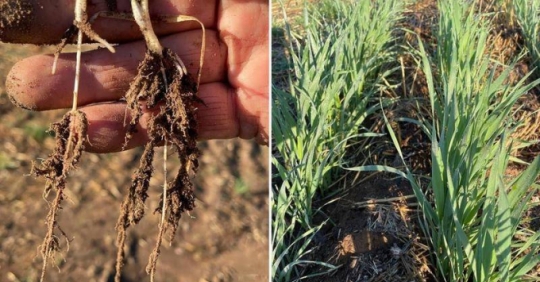[ad_1]
The new gene helps grow wheat at a deeper level, which significantly impacts production, which could add more than $2 billion/year in value (in Australia’s wheat industry alone).

New Australian technology could help boost wheat production as climate continues to warm.
Wheat production is threatened by global warming and negligible rainfall, increasing heat and drought stress. One possible adaptation strategy is to sow seeds earlier and deeper, using the water stored in the soil.
However, the short stalks of current wheat varieties reduce the amount of seedling that emerges from deep sowing. New genotypes substituting dwarf genes for longer stem lengths will facilitate deep sowing but have not shown a yield advantage.
A new Australian study validated a new crop simulation process using field data to assess the impact of new genotypes on Australian wheat production.
New report entitled Novel wheat varieties facilitate deep sowing to brave the heat of the changing climate (New wheat varieties make it easier to sow deep to weather the heat of climate change) shows that new wheat varieties could help provide the world with more wheat as the climate warms.
The study was published in the journal nature climate changeestimates that the new wheat variety could be sown twice as deep as current wheat varieties and with moisture penetrating deep into the soil.
A team from Australia’s national science agency, CSIRO, has identified new wheat genes and compared them to Australian weather data collected over 120 years, concluding that the new wheat could increase yield by around 20%.
dr Greg Rebetzke, chief scientific officer at CSIRO, said the paper showed a way to produce more wheat in a changing climate.
He said that new varieties that are more resilient to heat and drought “will be better adapted to future climate changes.”
dr Rebetzke – who has been involved in the research for 25 years – says the CSIRO team developed a new genetic makeup that helps develop longer shoots, or cotyledons, which he likens to straws.
“The hollow tube grows through the hard, dry soil, and when it reaches the surface, the wheat plant can grow through that sheath and safely float to the surface,” he said.
Current wheat varieties are 6 to 9 cm in length, but CSIRO was able to develop a wheat variety with buds about twice that length, up to 15 cm.
These genes were passed on to “breeding companies” about three years ago, who used them to breed new strains.
“This depth really gives growers more flexibility and guarantees culture independence,” says Dr. Rebetzke.
He said the ability to grow wheat at a deeper level would have a significant impact on how much can be produced, which could be worth more than $2 billion annually to Australia’s wheat industry. “Only by making sure that the seed germinates in time and is not delayed by Latter Rain.”
The team – made up of agronomists, geneticists and crop modelers – also used 120 years of historical climate data to predict the value of the new wheat gene in climate change.
“We used plant models to understand the value of climates that we haven’t experienced before,” said Dr. Rebetzke.
As climate change is projected to produce more rain in the summer and less rain in the fall, the findings will affect the mechanism by which wheat can be planted and grown, the CSIRO scientists say.
“There is a lot of interest in this work around the world because warmer and drier soil temperatures around the world are causing crop failures,” he said.
While several new wheat varieties are currently on the market in South Australia, the team hopes they will become more widely available in the years to come.
[ad_2]
Source link

